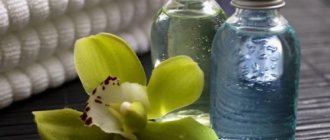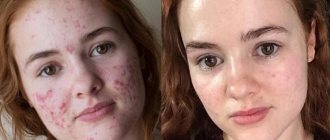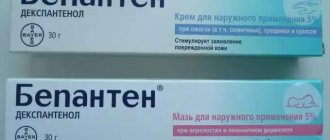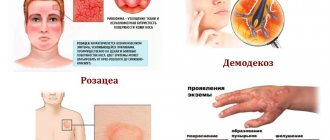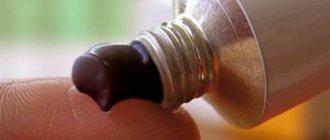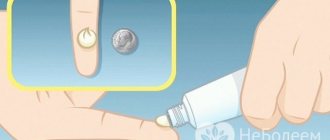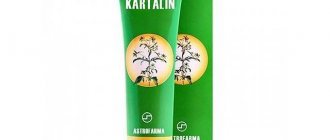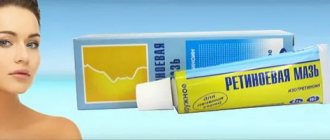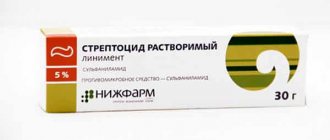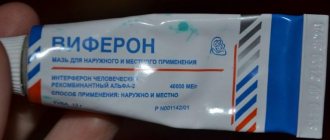What are antibiotics?
The word antibiotic came into medicine from Greece and consists of two words: anti (against) and bios (life).
Antibiotics are a whole group of drugs whose action is aimed at suppressing the proliferation of pathogenic bacteria or destroying them.
Antibiotics have 3 types of origin:
- Natural;
- Synthetic;
- Semi-synthetic.
Antibiotics do not work for diseases of viral origin, as well as for colds. Absolutely all antibiotics can not only rid the body of pathogenic bacteria, but also harm the healthy intestinal microflora. That is why, together with a course of antibacterial therapy, medications that improve intestinal microflora are prescribed.
Antibiotics can only be prescribed by a doctor depending on the patient’s disease. Since 1950, antibiotics have helped cure a wide variety of diseases, including tuberculosis and sexually transmitted diseases.
The first antibiotic was penicillin , which was discovered by British scientist Alexander Fleming in 1928. During the Second World War, there was an urgent need for antibiotics, and it was then that its mass production began, thanks to which it was possible to save a huge number of wounded people.
Prescription of probiotics
Preparations for topical use based on antibacterial substances are prescribed for the treatment of dermatological pathologies, the appearance of which is caused by harmful microorganisms. The most common diseases of the dermis are the following infectious lesions:
- Pemphigus in newborns.
- Erysipelas.
- Acrodermatitis atrophying in chronic form.
- Lymphocytoma.
- Impetigo herpetiformis.
- Lupus erythematosus in subacute and acute forms.
- Lichen planus.
- Scleroderma of limited and diffuse type.
- Eczema.
- Furunculosis.
- Injuries exposed to infection.
The listed diseases can develop not only due to bacterial infection, but also under the influence of other infectious pathogens, be it a fungus or a parasitic infestation. Antibiotics for skin infections can be prescribed even after trauma to the skin, when there is a risk of infection of the wound. In this case, the drugs are prescribed as a prophylactic agent.
Treatment of infections can be combined and include both the local use of ointments and the use of antibiotics in tablet form. The purpose depends on the severity of the infectious disease and the physiological characteristics of the patient.
You cannot independently interrupt antibiotic treatment for skin infections without significant reasons. If you do not complete the course of therapy, a relapse of the disease is possible, and the infectious agents will develop resistance to the drugs taken. Pathogenic microorganisms quickly lose sensitivity to the components of the drug, so during the treatment process it is necessary to achieve their complete destruction. Therefore, the prescribed course of therapy must be completed, even if there are no signs of the disease after half the allotted time.
Modern antibiotics no longer require the mandatory intake of probiotics or prebiotics to normalize the functioning of the gastrointestinal tract. However, many doctors still advise not to neglect drugs such as Linex, Acipol or Lactofiltrum during antibiotic treatment.
We looked at which antibiotics are the most effective for skin infections.
The use of antibiotics for various diseases
Antibiotics are used exclusively in cases where the disease is caused by bacterial flora. Correct antibiotic treatment can only be prescribed by a doctor.
Antibacterial drugs differ in their spectrum of action; this is primarily taken into account when prescribing them. Antibiotics, which have a broad spectrum of action, are prescribed for diseases with an unknown pathogen.
Antibiotics are divided into 5 groups:
- Penicillin group;
- Group of cephalosporins;
- Macrolides;
- Tetracycline group;
- Aminoglycosides.
Plus, each of the 5 groups is divided into 2 subgroups:
- Wide spectrum of action;
- Narrow spectrum of action.
Broad-spectrum antibiotics can suppress the proliferation of a large number of pathogenic bacteria. Narrow-spectrum antibiotics are aimed at killing only certain bacteria. A separate group includes antisyphilitic and antituberculosis drugs.
Broad-spectrum antibiotics include:
- Ampicillin;
- Levomycetin;
- Tetracycline.
Narrow-spectrum antibacterial drugs:
- Erythromycin;
- Penicillin;
- Oxacillin.
Depending on what disease the patient is suffering from, he is prescribed drugs of a certain group and subgroup of antibiotics.
Just a few decades ago, many diseases were treated with an antibiotic such as penicillin. Medicine does not stand still, and now, when determining a bacterial infection that has affected the human body, a special antibiotic is prescribed, which is aimed at destroying this bacterium.
These medications are highly effective for diseases caused by streptococci and staphylococci. They are also used in the treatment of sexually transmitted diseases, respiratory tract infections, endocarditis, sepsis, central nervous system lesions, purulent skin lesions, cystitis, peritonitis, otitis, prostatitis and many other diseases.
For example, streptococci cause a purulent disease - streptoderma. Here you can read more about what streptoderma is in children.
Since each medication has a huge number of contraindications, it is necessary to consult a specialist before use.
What should you remember when treating with antibiotics?
If therapy with antibacterial drugs is required, you definitely need to know:
- Using antibiotics without a doctor's prescription is prohibited. This may have a negative impact on your health.
- Diseases caused by viruses (flu, herpes and others) cannot be cured with antibacterial drugs. Such drugs have a depressing effect on the immune system, which aggravates the patient’s condition.
- Pathogens tend to develop resistance to drugs, so it is not recommended to use antibacterial agents of the same group for a long period.
- Treatment with antibiotics must be accompanied by the use of desensitizing drugs, otherwise there may be a risk of allergies.
- Antibiotics kill not only pathogenic microorganisms, they have a detrimental effect on the beneficial intestinal microflora, which can lead to dysbiosis.
- Antibacterial drugs are very toxic. They can accumulate in vital organs (liver, kidneys, bone marrow).
- Before starting antibacterial therapy, you must carefully study the instructions.
- During the treatment process, you must not deviate from the regimen and dosage. It is forbidden to exceed the daily dose of the medicine. The course of treatment with antibiotics is on average 5-10 days.
- Often after taking antibacterial drugs, patients experience the appearance of fungal and sometimes bacterial infections. This is due to the fact that the medicine destroys the natural microflora of the body, which is why the place of beneficial bacteria is taken by pathogenic microorganisms.
Diseases that appear in adult patients are also characteristic in most cases in children. It is not always advisable to prescribe local antibiotic-based medications to a child for skin infections. In childhood, taking such medications can cause irreparable harm to a fragile body, so the doctor makes a prescription after a full examination.
It is very important to conduct a special test before starting treatment. A small amount of liquid antibiotic (for infections in children) is applied to the skin and left for a while. An allergy test will make it possible to protect the process of using antibiotics in the treatment of dermatological pathologies.
We invite you to familiarize yourself with celandine baths for skin diseases
Use of antibiotics in dermatology
Our skin is our largest organ and has many important functions. The beauty and health of a person depends on the skin. Skin diseases are not only unpleasant, but in many cases they are dangerous to health. Antibacterial therapy is used to treat some skin diseases, if they are infectious.
The following diseases are treated with antibiotics:
- Eczema;
- Erysipelas;
- Lymphocytoma;
- Pemphigus of newborns;
- Acrodermatitis atrophying;
- Lupus erythematosus;
- Some types of lichen;
- Infected skin lesions;
- Scleroderma;
- Furunculosis.
are currently used for skin diseases . These medications are effective in getting rid of infectious skin diseases. They are best used by intramuscular injection.
Antibiotics for the treatment of skin diseases:
- Benzylpenicillin potassium or sodium salt;
- Semi-synthetic penicillins are used in the treatment of infectious dermatosis caused by streptococcus and streptococcus.
- Oxacillin. This drug is used by intramuscular injection, as well as in the form of tablets and capsules.
- Ampicillin. A drug that has a wide spectrum of action and effectively fights many skin diseases.
- Ampiox. This antibiotic contains oxacillin and ampicillin. It has proven itself well in the treatment of dermatoses.
You might be interested! Ointment "Kartalin": instructions for use, price and reviews
Antibiotics in tablet form
Antibiotics in the form of capsules and tablets are convenient to use because they can be taken at home. Plus, they can be taken by pregnant women and children with minimal risk of side effects.
Some of the most commonly prescribed drugs in the form of tablets and capsules are:
- Ecoclave;
- Amoxiclav;
- Flemoxin;
- Panclave;
- Augmentin;
- Flemoclav.
The main disadvantage of taking drugs of the penicillin group is that they can cause severe allergies. This group of antibiotics treats skin diseases well for a long time.
Injectable forms of antibiotics
Antibiotics in the form of injections are more effective than the same drugs in the form of capsules and tablets.
In the treatment of skin diseases, injections of cephalosporin antibiotics are most often used, such as:
- Cefazolin;
- Ceftriaxone;
- Cephalexin;
- Cefuroxime;
- Ceftibuten;
- Cefipime;
- Kefzol.
Antibiotics of this subgroup are effectively used in the treatment of skin diseases in advanced cases.
The most popular medications
There is a list of popular medications that are most often prescribed for infections caused by bacteria. Over time, they will become ineffective, as microbes develop resistance to drugs every day. Scientists from all over the world are creating more modern drugs to combat various diseases. There are already 4 generations of antibiotics. The most recent, fourth, has the greatest effectiveness and is less toxic to humans.
Ointment is an ideal way to fight bacteria in skin diseases. For infections, doctors often prescribe:
- Levomekol (Levosin) is an affordable and effective medicine. In addition to the antibacterial effect, it has an immunostimulating effect on soft tissues. Suitable for the treatment of purulent lesions.
- Metrogyl is a gel to combat ulcers on the mucous membranes. Also often used for acne on the face. Metrogyl is a good remedy for the treatment of simple inflammations and small ulcers.
- Baneocin - suitable for the treatment of inflammatory processes that are complicated by purulent discharge. Sold in both ointment and powder form.
Also, doctors quite often prescribe combination drugs, especially if it is not possible to diagnose the disease. Among them are Triderm and Pimafucort ointments. But such dangerous means can only be used under the supervision of a specialist. They contain a dangerous component - a corticosteroid, which, if used incorrectly, can only worsen the situation.
Antibiotic ointments
It is also worth noting that in the treatment of many skin diseases, in addition to antibacterial drugs in tablets and injections, ointments with antibiotics are used. Ointments are applied by applying to damaged areas several times a day. The advantages of ointments are that they have virtually no side effects and are easy to use. With their help, treatment can take place at home.
For skin diseases, ointments such as:
- Levomikol;
- Tetracycline ointment;
- Streptocide emulsion.
Ointments help reduce the number of rashes, reduce burning and itching.
Antibiotics for psoriasis
Psoriasis is a skin disease that has become widespread recently. It is impossible to completely cure psoriasis, but there is a way to reduce the number of flare-ups. If, during the next exacerbation of psoriasis, an infectious focus is detected in the patient’s body, which became the cause of the exacerbation of the disease, then antibiotics cannot be avoided.
Antibacterial therapy is also necessary for weeping forms of this disease, since infection may occur. The antibiotic is selected depending on where the inflammation occurs.
Antibiotics for scleroderma
Scleroderma is another skin disease that is treated with antibiotics. They mainly use drugs of the penicillin group and their analogues. This disease affects internal organs, which is why the choice of antibiotics depends on which organs are affected and at what stage the disease is. And also on the age of the patient.
Whatever antibiotics the specialist prescribes, it is worth remembering that they need to be changed every 4 weeks, as microbial resistance may occur. In the early stages, prokinetics . The group of cephalosporins is used for damage to the lungs, small intestine, and kidneys.
Antibiotics for other skin diseases
Just a few decades ago, antibacterial therapy was prescribed only for the treatment of skin diseases such as dermatosis and pyoderma. Currently, the list of diseases has increased significantly. Many new semi-synthetic drugs have appeared that have a wider spectrum of action. Thanks to this, it is possible to more effectively treat many skin diseases.
Instructions for using ointments
Recommendations and facts
Some antibiotics are recommended in extreme cases when other types of therapy do not help. Such drugs must be used according to the instructions. Any ointment is applied to a clean area of skin. To do this, you can use lotions, cleansing tonics and gels. Next, the area affected by the rash is wiped dry. The ointment layer should be thin to prevent burns or redness. Avoid the area around the eyes, lips and nose.
Antibiotic ointments should not be used for a long time. There are short intervals between treatments. Many drugs on the list are combined and combined with other effective components. In addition to the product, use a moisturizer, because the skin becomes very dry and flaky. If you follow all the rules, the result will be visible already in the second week of use. In addition to affecting the skin, the active substances also eliminate infection in other organs.
Who will benefit from antibiotic ointments?
Most often, skin problems occur in adolescence, but due to the influence of external factors, poor diet and cleansing, many adults have pimples and acne. The use of ointment is relevant primarily for people with problem skin, during the period of hormonal changes in women.
Who should not use these ointments?
External antibiotics are strictly prohibited in children under 12 years of age, pregnant women and people prone to allergic rashes. If there are few pimples on the face or other parts of the body, then the use of ointment will not be necessary. In such cases, proper care according to your skin type, changing your diet to healthier and more balanced foods, as well as proper rest will be enough.
Self-administration can not only cause the body to become resistant to a particular type of antibiotic, but also cause withdrawal symptoms, after which even more rashes appear on the face.
Side effects of antibiotics
One of the disadvantages of antibacterial therapy is the large number of contraindications and side effects. For example, broad-spectrum antibiotics have many more side effects than narrow-spectrum drugs.
The most common side effects include:
- Nausea;
- Vomit;
- Diarrhea;
- Constipation;
- Headache;
- Allergic reactions;
- Disruption of the cardiovascular system;
- Kidney disorders.
Each antibiotic has its own individual side effects. And if you notice side effects while taking antibiotics, you need to change them.
Antibiotic categories
For psoriasis, three groups of antibacterial agents are most often used, which demonstrate positive therapeutic results:
- penicillins (Amoxicillin);
- macrolides (Erythromycin, Oleandomycin, Clarithromycin);
- cephalosporins (Ceftriaxone, Cefepime and others).
Each group of drugs has its own characteristics. To achieve results, you must first consult with your doctor.
- Antibacterial agents are prescribed with the parallel use of immunosuppressants. They reduce the body's defenses, making it more susceptible to pathogenic microorganisms.
- In other cases, antibiotics are used to treat, for example, a purulent skin infection. Antibacterial drugs prevent the progression of infectious tissue damage.
To stabilize the patient's condition, vitamin complexes are prescribed in parallel. They increase the effectiveness of basic therapy and strengthen the body.
Contraindications to the use of antibiotics
Contraindications to the use of antibiotics indicate that this drug may not only not be beneficial, but also have a negative impact on health.
The most common contraindications to the use of antibiotics are:
- Allergy;
- Liver or kidney diseases;
- Pregnancy, first and second trimester;
- Breastfeeding period;
- Children's age, especially, this applies to strong antibiotics.
Pregnant women and children can use antibiotics only in case of a serious infection , which would be quite problematic to cure without antibiotics. If you are taking any other medications in addition to antibiotics, you should consult a specialist. Since some medications can react with antibacterial drugs and cause undesirable effects.
VULNUZAN® ointment
Registration number: LSR-004411/10-081015
Brand Name: Diamond Green
Chemical name: bis-(p-diethylamino/-triphenylhydrocarbinol oxalate)
Dosage form: solution for external use (alcohol)
Active ingredient: brilliant green - 1 g or 2 g
Excipients: ethanol (ethyl alcohol) 95%, purified water.
Registration number P N015282/03-141014
Trade name: BETADINE®
Dosage form: Solution for local and external use 10%
Composition: 1 ml of solution contains 0.1 g of the active substance povidone iodine, as well as excipients: glycerin, nonoxynol 9, citric acid, anhydrous, disodium hydrogen phosphate, sodium hydroxide 10% solution (w/v) to establish pH, water purified.
Registration number P N015282/02-080816
Dosage form: ointment for external use 10%
Composition: 1 g of ointment contains 100 mg of the active substance - povidone iodine (which corresponds to 10.25 mg of active iodine), as well as excipients: sodium bicarbonate, macrogol 400, macrogol 4000, macrogol 1000, macrogol 1500, purified water.
The most popular ointments for acne on the face
Ointment is a remedy for the treatment of superficial skin damage. It differs from cream in thickness and percentage of fats, active substances and some other components (thickeners, etc.). Due to the high density, almost all ointments can only be applied spot on. Otherwise, acne and acne problems may worsen.
There are also medicinal creams or liniments. They belong to cosmeceuticals, a branch of pharmacology that has similar goals to cosmetology. For example, this is a good cream for acne on the face and neck: Baziron, Skinoren, Ornidazole and others.
Vishnevsky ointment
Balsamic liniment created by surgeon Vishnevsky exclusively using natural ingredients. The composition includes tar, xeroform and castor oil. They have a strong antiseptic effect, promote tissue regeneration, and normalize the moisture balance in cells.
You can buy the product at any pharmacy; the drug is available without a prescription and the average price is up to $1. Despite its availability, Vishnevsky ointment for acne on the face can only be used after the recommendation of a specialist. Tar and castor oil have strong irritating properties and negatively affect ulcers and wen. In addition, they can provoke the accumulation of exudate in inflamed areas of the skin.
Zinc ointment
An effective ointment for acne and pimples on the face. It is a mixture of paraffin wax, mineral oil and zinc oxide powder. Due to zinc powder, it has a beneficial effect on the skin. Helps reduce inflammatory processes, dries out pimples and blackheads, and “pulls out” pus from wounds. Vaseline softens tissue, which helps prevent scarring.
This is one of the few drugs that is approved for use during pregnancy. Clinical studies have shown that there are no acute contraindications or side effects after using the zinc mixture. Although those with oily and acne-prone skin need to be careful. Paraffins clog pores and are addictive. The product can only be used spot-on.
Tetracycline ointment
The main active element of the product is tetracycline. It is a broad-spectrum antibacterial antibiotic. Helps get rid of purulent pimples and comedones, subcutaneous lesions and other imperfections that arise under the influence of aggressive microorganisms.
The product is strictly prohibited for use during pregnancy. It should also be used with great caution in relation to children. Prescribed exclusively by specialists in the presence of acute inflammatory processes and diseases of the subcutaneous tissue.
READ ALSO: How to remove a wen at home: is it possible to get rid of it, cure it yourself using folk remedies, how treatment occurs on the body
Ichthyol ointment
Natural antiseptic. In terms of action, it is the closest analogue of Vishnevsky’s liniment. Ichthyol ointment is used to treat subcutaneous acne on the face, inflamed pores, and boils. The composition includes ichthammol and petroleum jelly.
Ichthammol or ichthyol are sulfonic acids of shale oil. They have an antiseptic effect and have an analgesic effect. The drug is prescribed for bacterial skin lesions, infectious diseases and purulent accumulations (boils). In the form of compresses it helps to treat subcutaneous acne. It is even used in neuralgia. There are no special instructions for use.
Ichthyol
Heparin ointment
A common anticoagulant. Healing heparin ointment is used for traces of acne and comedones, elimination of hematomas, treatment of hemorrhoids. The composition includes benzonicotinic acid, fats, heparoid.
Properties of heparin:
- Reducing the inflammatory process;
- Anesthesia;
- Antithrombotic effect.
An important feature of the drug is its incompatibility with tetracycline. Also, this ointment is not used during pregnancy and lactation.
Sinaflan
A very cheap substance for allergic reactions and various diseases that are accompanied by peeling and dryness of the epidermis. Contains propylene glycol, which is used to treat the allergic effects of chemotherapy, fungal diseases, rosacea and sunburn.
Sinaflan
Levomekol
This is the best acne ointment for teenagers. It is considered unique in its own way. There are no additional components in its composition. The product consists entirely of medicinal components: chloramphenicol and methyluracil. Tops the rating of antimicrobial drugs, used to accelerate tissue regeneration and draw out purulent accumulations from open wounds.
Methyluracil is used externally and internally. To be effective, it must be applied to the skin in the form of compresses or combined with usual foods (as prescribed by a specialist).
Syntomycin ointment
Syntamycin liniment is an antibiotic ointment that is actively used to treat burns, insect bites, acne, and helps with scars and subcutaneous pimples. The composition includes synthomycin emulsion, castor oil, water and a special preservative.
This is an excellent and inexpensive pharmaceutical for treating problem skin in adolescence. Its difference from other similar products is that it can be used as a cream. Doctors have allowed the product to be applied to the entire face, rather than spot-on, which is very convenient when treating acne. Side effects include itching and hives.
Sulfuric
An affordable product that belongs to pharmacopoeial drugs. The classic composition includes animal fat (most often pork) and sulfur powder. Nowadays, the more common one is the so-called Kutumova formula. It uses Vaseline instead of fat. The drug is used to dry out inflamed acne, cold redness, treat skin parasites and fungal diseases.
The product can be used on all parts of the body, with the exception of the head (due to the dense fat base, it is quite difficult to wash out). Sulfur ointment can cure the most painful pimples in a week.
READ ALSO: Homemade mask for blackheads with activated carbon
Zenerite
An effective cream for acne on the face, which contains erythromycin ointment and zinc powder. This is a combined action drug used in cosmetology, cosmeceuticals and medicine for the treatment of various skin diseases. It has a strong anti-acne effect, relieves inflammation and reduces redness.
It is characterized by a bacteriostatic effect on staphylococci, but is not recommended for disinfecting wounds and mucous membranes.
Useful properties of Zinerit ointment:
- Normalization of the sebaceous glands;
- Acne treatment;
- Quickly relieves swelling and eliminates skin pain in areas where pimples form.
Baziron
Baziron is a bacteriostatic gel based on benzoyl peroxide. There are different types of this drug, classified according to the concentration of the active substance. Like many other antibiotic ointments against acne on the face, Baziron AS provides a local anesthetic effect. In addition, the product has a pronounced exfoliating effect and quickly draws pus from the follicle.
The main disadvantage of the gel is the reduction in the amount of melanin in the skin, which affects its sensitivity to sunlight. In addition, it should not be used by children under 12 years of age.
Baneocin
Complex antibacterial agent. This ointment is on the list of the most popular drugs for acne and folliculitis on the face and body. It is actively used in dermatology to relieve inflammation and cure diseases caused by pathogens. In addition, it is used in obstetrics, pediatrics, and otolaryngology.
What can be treated with Baneocin:
- Mastitis, various diseases of the follicles during lactation;
- Acne, boils, burns. In some cases, doctors prescribe an ointment to disinfect open wounds;
- Subcutaneous pimples, boils, inflamed comedones;
- Like Bepanten, Baneocin is used for diaper dermatitis and diathesis.
- Hidradenitis. This is a common inflammation of the sebaceous glands.
Reviews
Experts do not recommend using antibiotics as monotherapy in the treatment of dermatological diseases of infectious origin. The therapeutic regimen should also be supplemented with antihistamines, vitamin complexes, drugs to normalize intestinal microflora, etc.
Patients generally respond positively to the effect of antibiotics in treating skin problems. Medicines with antibacterial and anti-inflammatory effects help to quickly cope with eczema and dermatitis caused by infection.
There are especially many reviews about the treatment of facial rashes with antibiotics. This therapy must be agreed with a doctor, since all of the drugs listed above have a number of contraindications and possible adverse reactions. In addition, it is important to accurately establish the cause of the infection and identify the pathogen, since the choice of antibiotic will depend on this.
List of ointments for subcutaneous acne
It is subcutaneous acne that causes the most discomfort. The main disadvantage is the difficulty in treatment. It is almost impossible to get rid of subcutaneous tissue mechanically. The inflammatory process begins in the depths of the follicle, which is why it is impossible to squeeze out the pus. Special ointments are used to treat internal acne.
- Streptocide
. Broad-spectrum antimicrobial drug. Destroys all streptococcal microorganisms. Quickly relieves inflammation and reduces pain, accelerates the process of pimple maturation. For the treatment of subcutaneous tissue, streptocide can even be used in tablet form. The capsule is crushed and applied as a compress to the affected area; - Heparin
. The principle of action is based on a strong active component - heparoid. Suitable for treating inflamed follicles, redness after shaving in men and hair removal in women. Has pronounced anti-inflammatory and antibacterial properties; - Syntomycin
. This is a powerful extracting substance that gets rid of comedones, red subcutaneous pimples and inflamed acne marks. The product can only be applied to spots, since with extensive use it reduces local immunity; - Calendula ointment
. A simple medical mixture that includes calendula extract and Vaseline. This is a natural antibacterial drug that has a reparative effect. Due to the antimicrobial properties of the plant, the product relieves redness and inflammation. Suitable for local use; - Curiosin
. An analogue of zinc ointment, but the product contains hyaluronic acid as an additional active component. It is used to treat various types of acne, internal pimples, and accelerate tissue regeneration. Helps prevent the formation of scars after squeezing pimples and chicken pox; - Cynovit
and
Skinoren
. Almost identical gels for problem skin. Enriched with extracts of medicinal plants. As auxiliary agents they help with neurodermatitis, fungal diseases, provide anti-inflammatory properties; - Salicylic
and
zinc ointment
.
READ ALSO: What is a boil: photos, types, causes, where it can be, treatment
Warming ointments
Such products contain components that irritate the skin and accelerate blood circulation and metabolic processes in tissues. Therefore, they have an analgesic effect, relieve muscle spasms and warm. Due to the pronounced stimulating effect on the nervous system, such drugs are not used at night. They can be used to warm up muscles before training or for osteochondrosis, myalgia, and radiculitis.
It is not advisable to use painkillers immediately after an injury, as they can cause increased inflammation or bleeding. The basis of such drugs can be different components:
Patient reviews
During adolescence, my daughter developed acne on her face. Since she began to squeeze them out, an inflammatory process began on the skin. We consulted a gynecologist and a dermatologist and prescribed tetracycline antibiotics. The pills were taken according to the schedule. There were no side effects. The acne disappeared in 2 weeks.
Alena, 39 years old
Using antibiotic ointment for acne on my face, I quickly got rid of the inflammation. The treatment lasted 7 days. The skin condition improved, there were no side effects. After therapy, I followed all the doctor’s instructions, so a relapse was ruled out.
Andrey, 25 years old
When acne appeared on my face, I decided to make a mask with tetracycline.
After just 5 days, the mild inflammation disappeared and the acne disappeared. To prevent a relapse, I used special moisturizers for another 3 days. Irina, 32 years old
Combined ointments
Such drugs contain several components and have a complex effect. They not only relieve pain and inflammation, but also accelerate cell regeneration and have a resolving and thrombolytic effect. They penetrate deep into the tissue and quickly relieve swelling after injury. Due to improved blood circulation, the hematoma disappears. In addition, combined ointments restore damaged cartilage tissue, therefore improving joint mobility. The most famous remedy of this group is “Dolobene”.
The drug contains sodium heparin, which improves blood circulation and resolves blood clots, the anti-inflammatory agent dimethyl sulfoxide and plant essential oils.
Rules for using such ointments
Any drug can be used to temporarily relieve pain. But for long-term treatment, you should consult your doctor. After all, even external agents can have contraindications and sometimes cause allergic reactions. Therefore, you need to know how to use such ointments correctly.
- These products are applied in a thin layer to the affected area. In some cases, it is recommended to rub the ointment in with massage movements and apply a warming bandage. This is done 2-3 times a day.
- Such ointments cannot be used for various skin lesions, dermatitis and eczema.
- cannot be used for longer than 2-3 weeks.
- Warming ointments are not used immediately after an injury.
- Preparations based on snake and bee venom can cause severe irritation and an allergic reaction.
Inflammation is a completely adequate protective and adaptive reaction of the body to the influence of external pathogenic stimuli. This is how nature protects us from the influence of harmful bacteria and microorganisms.
The inflammatory process can be localized in any part of the body and any organ. A timely response to such manifestations helps to avoid possible complications. When treating a pathological process, an anti-inflammatory ointment or gel is most often used.
Can genital herpes be treated with antibiotics?
There are a huge number of dermatological diseases. Some of them are easy to treat, but there are others that are difficult to deal with. Most often they are caused by various pathogenic microorganisms, so doctors often prescribe antibiotic treatment to their patients.
The herpes virus is a fairly common infectious disease. It appears as blistering rashes on the body, lips and genitals. There are 2 types of virus (I and II). According to scientists, the first type affects the mucous membranes of the lips, and the second - the genitals. Although there were cases when a patient had rashes on various parts of the body, only one type of virus was detected in him.
Indications for treatment with topical antibiotics are bacterial lesions of the skin and mucous membranes. They can also be prescribed as a prophylactic agent to prevent the development of infection, for example, after surgery or in case of serious wounds.
Ointments are prescribed for the following diagnoses:
- Purulent skin lesions (cellulitis, abscesses) caused by staphylococcus and other bacteria.
- Acne, acne and other cosmetic problems.
- Streptoderma is a skin lesion caused by streptococci.
- Purulent conjunctivitis.
- Dental diseases.
- Burn wounds, severe thermal damage to the skin.
- Treatment of wounds after an animal bite.
- Bedsores.
It is important to consider that local antibiotic treatment will only be effective when the infection is localized and has not spread further. Otherwise, such therapy is useless and can only be used as an adjuvant.
Cases in which the action of antibiotics in ointments and solutions is not enough:
- Angina.
- Pharyngitis, laryngitis.
- Sinusitis.
- Purulent lesions of the skin and mucous membranes with increased body temperature and general deterioration of the condition.
- Scalded skin syndrome in infants.
- Trophic ulcers caused by thrombophlebitis, diabetes mellitus and other diseases.
- Interpretation of online tests - urine, blood, general and biochemical.
- What do bacteria and inclusions mean in a urine test?
- How to understand the tests of a child?
- Features of MRI analysis
- Special tests, ECG and ultrasound
- Norms during pregnancy and the meaning of deviations..
Interpretation of analyzes
Inflammation is a protective local response of the body to the action of a damaging agent.
Rubor, tumor, calor, dolor and functio laesa (redness, swelling, “local heat”, pain and impaired function) - this is how the great ancient doctors Celsus and Galen described the essence of the inflammatory process almost in rhyme in Latin.
At the turn of the 19th - 20th centuries. clinicians have found other terms to describe this phenomenon - alteration, exudation, proliferation (damage, release of blood cellular elements into the interstitial spaces and the beginning of healing through the formation of an inflammatory infiltrate).

